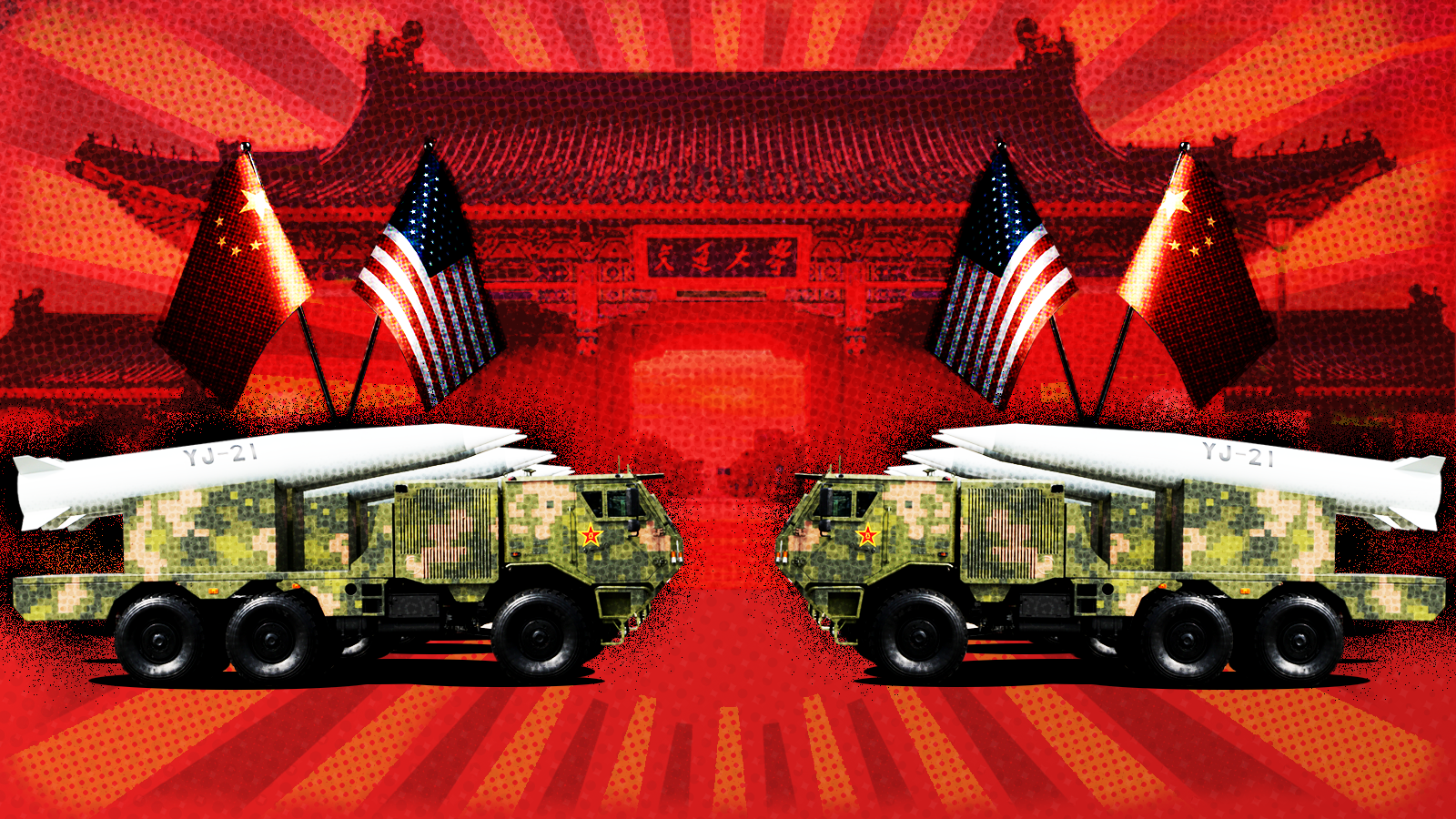The U.S. Bureau of Industry and Security (BIS)’s long-anticipated 50% “Affiliates” rule stands to close a longstanding loophole in export controls.
It also has opened up a well of questions from industry—especially after leaders announced its suspension in late October, as a result of trade talks with China.
The bones of the BIS rule appear straightforward: It automatically will subject entities that are owned 50% or more by U.S.-listed parties to export licensing requirements themselves. But when will it take effect now? What specific requirements will apply where? And what risks and obligations apply in the interim?
We’re answering your most frequently asked questions about the Affiliates Rule below, and we’re updating, too, as more come in. (Have your own questions on how the rule works? Submit them to us here.)
BIS then included a few further specifics in a new final rule issued Nov. 12. Most notably, it says the suspension “is set to end November 9, 2026, absent a future extension.”
The volatility of the U.S.-China dynamic, experts say, makes it difficult to predict what could come next. Officials at the White House and Commerce Department did not respond to emailed questions from The Brief seeking additional comment.
Non-listed majority-owned subsidiaries are well positioned to facilitate transactions on behalf of a listed parent. That reality still creates obligations for U.S. exporters:
That includes sanctions related to:
However, BIS has cautioned that subsidiaries or counterparties operating out of high-risk addresses on the Entity List may pose diversion concerns and therefore will warrant heightened scrutiny.
For example: If one entity on the Entity List owns 25% of a company and an entity on the MEU List owns another 25% stake in it, then BIS would consider that subsidiary to be 50% owned in the aggregate by listed parties and therefore subject to licensing requirements.
Such ties “present a Red Flag of potential diversion risk to the listed entity,” the Affiliates Rule says. “In this type of situation, additional due diligence is necessary, especially given the opaque ownership structures and limited access to accurate ownership data in certain jurisdictions.”
Say Entity List Company A owns a 35% share of a non-listed Company C, while Entity List Company B owns another 15%, for an even 50% in the aggregate. If Company C in turn owns 50% of a non-listed fourth company, Company D, Company D would also be subject to the Affiliates Rule and its licensing requirements.
Why? Similar to OFAC’s rule, the math for the BIS 50% rule “resets” at each level of subsidiary ownership. Each entity in a downstream subsidiary chain that is owned 50% or more by restricted parties is considered restricted itself. Company C therefore is considered restricted, so its 50% ownership of Company D results in Company D being considered restricted, too.
This article has been updated with additional questions and answers. Share your own questions with the Kharon Brief here.
More on the BIS 50% rule:
It also has opened up a well of questions from industry—especially after leaders announced its suspension in late October, as a result of trade talks with China.
The bones of the BIS rule appear straightforward: It automatically will subject entities that are owned 50% or more by U.S.-listed parties to export licensing requirements themselves. But when will it take effect now? What specific requirements will apply where? And what risks and obligations apply in the interim?
We’re answering your most frequently asked questions about the Affiliates Rule below, and we’re updating, too, as more come in. (Have your own questions on how the rule works? Submit them to us here.)
1. What do we know about the rule’s suspension?
A White House fact sheet released Nov. 3 confirmed that the U.S. “will suspend for one year, starting on November 10, 2025, the implementation of the interim final rule titled Expansion of End-User Controls to Cover Affiliates of Certain Listed Entities.”BIS then included a few further specifics in a new final rule issued Nov. 12. Most notably, it says the suspension “is set to end November 9, 2026, absent a future extension.”
The volatility of the U.S.-China dynamic, experts say, makes it difficult to predict what could come next. Officials at the White House and Commerce Department did not respond to emailed questions from The Brief seeking additional comment.
2. With the rule suspended, is it safe to transact with affiliates of listed entities?
Not necessarily—and this brings us back to the loophole that prompted the Affiliates Rule.Non-listed majority-owned subsidiaries are well positioned to facilitate transactions on behalf of a listed parent. That reality still creates obligations for U.S. exporters:
BIS’s FAQ states that if a company “acts as an agent, a front, or a shell company for the listed entity in order to facilitate transactions that would not otherwise be permissible with the listed entity,” that would likely violate U.S. export controls.
BIS further encourages parties that “export, reexport, or transfer items subject to the EAR with knowledge that the items are destined to a subsidiary, sister, parent, or other affiliate of a listed entity” to take extra due-diligence steps to ensure the items “are not ultimately destined for the listed entity.”
3. What will the Affiliates Rule apply to?
The rule will apply to entities owned 50% or more in the aggregate, directly or indirectly, by:- parties on the Entity List, which are subject to individual licensing requirements and policies on top of those found elsewhere in the Export Administration Regulations (EAR).
- parties on the Military End-User (MEU) List, which is maintained by BIS and require licenses for transactions involving certain sensitive items, such as chemicals, computers, sensors, and aircraft and navigation tech.
- certain parties on the U.S. list of Specially Designated Nationals (SND)—but not all.
4. Which SDNs fall within the scope of the regulations?
Many, but not all. The Affiliates Rule specifically will apply licensing restrictions to the sanctions program administered by the U.S. Treasury Department’s Office of Foreign Assets Control (OFAC) identified in § 744.8(a)(1) of the EAR.That includes sanctions related to:
- Russia and Belarus;
- terrorism;
- weapons of mass destruction and proliferation;
- and narcotics trafficking and transnational criminal networks.
5. What won’t the Affiliates Rule apply to?
- U.S. companies. Because the rule relates to exports, it won’t apply to U.S.-based companies that may be owned 50% or more by listed foreign parties.
- Entities that are only controlled—but not owned—50% or more by a listed party. Like OFAC’s longstanding 50% rule, BIS’s rule will apply to ownership stakes in an entity, not to control. That said, BIS notes in its own FAQ that foreign parties that have significant minority ownership or other close ties to listed parties still will present red flags, requiring heightened due diligence to mitigate potential diversion risks. (More on this in a later question.)
- The non-listed parents of listed entities. The Affiliates Rule will flow only downstream, to the subsidiaries of listed parties; it will not flow upstream. If a party is on the Entity List but its parents are not, its export restrictions would not apply to those parents.
- Other SDNs outside of the specifically listed sanctions programs, such as programs that specifically target parties in the Balkans, South Sudan, Venezuela or Iran. That doesn’t mean those parties’ subsidiaries will be safe trading partners, of course: U.S. exports to Iran have long been banned, for instance, and the U.S. government has widely sanctioned the subsidiaries of Iranian sanctioned actors as is.
6. What about entities operating from the same address as a listed entity, or operating out of addresses on the Entity List?
While BIS began adding address-only listings to the Entity List last year, the focus of the Affiliates Rule is just on majority-owned entities. Addresses associated with listed parties—such as those used by corporate service providers or logistics hubs—will not, on their own, bring entities under the scope of the rule.However, BIS has cautioned that subsidiaries or counterparties operating out of high-risk addresses on the Entity List may pose diversion concerns and therefore will warrant heightened scrutiny.
7. How does aggregate ownership apply under the Affiliates Rule?
The rule’s 50% threshold will sum across all listed owners, even if they’re on different lists. If listed parties’ ownership share hits 50% in aggregate, the Affiliates Rule will apply.For example: If one entity on the Entity List owns 25% of a company and an entity on the MEU List owns another 25% stake in it, then BIS would consider that subsidiary to be 50% owned in the aggregate by listed parties and therefore subject to licensing requirements.
8. What are the responsibilities under the Affiliates Rule if a listed party is a minority owner of a company?
Majority ownership is the clear focus, but BIS’s rule also notably warns of risks tied to “significant minority ownership” by, or leadership ties to, foreign parties on the Entity List, MEU List or SDN List.Such ties “present a Red Flag of potential diversion risk to the listed entity,” the Affiliates Rule says. “In this type of situation, additional due diligence is necessary, especially given the opaque ownership structures and limited access to accurate ownership data in certain jurisdictions.”
9. What are the responsibilities under the rule if you can’t verify U.S.-listed parties’ ownership stakes in a company?
The Affiliates Rule introduces Red Flag 29, which establishes that if an exporter has “knowledge” that a foreign entity is owned directly, indirectly or in part by listed parties, the exporter must determine the ownership percentage. Where ownership cannot be verified, exporters will “have an affirmative duty” to secure a BIS license before moving forward with a transaction.10. How does the Affiliate Rule assess a chain of partial ownership?
The math can get tricky here.Say Entity List Company A owns a 35% share of a non-listed Company C, while Entity List Company B owns another 15%, for an even 50% in the aggregate. If Company C in turn owns 50% of a non-listed fourth company, Company D, Company D would also be subject to the Affiliates Rule and its licensing requirements.
Why? Similar to OFAC’s rule, the math for the BIS 50% rule “resets” at each level of subsidiary ownership. Each entity in a downstream subsidiary chain that is owned 50% or more by restricted parties is considered restricted itself. Company C therefore is considered restricted, so its 50% ownership of Company D results in Company D being considered restricted, too.
11. If my company is based outside the U.S., is the Affiliates Rule something I will need to worry about?
It might depend on your supply chain. The Affiliates Rule will apply extraterritorially through the EAR, which governs not only items exported from the U.S. but also certain foreign-produced items that contain U.S.-origin technology or software.This article has been updated with additional questions and answers. Share your own questions with the Kharon Brief here.
More on the BIS 50% rule:







